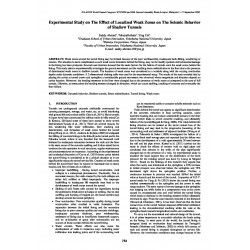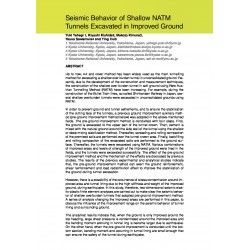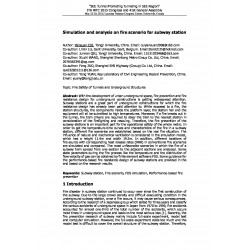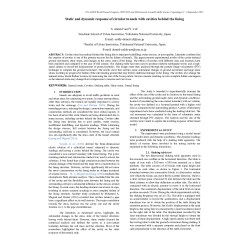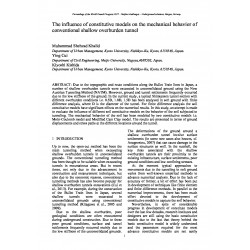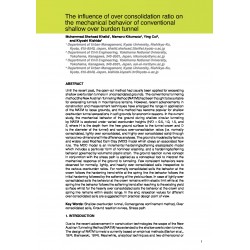No document
Search & filter
Search for a publication
Search & filter
List of products by author: Y. Cui
-
Experimental Study on the Effect of Localized Weak Zones on the Seismic Behavior of Shallow Tunnels
Abstract: Weak zones around the tunnel lining may be formed because of the poor workmanship, inadequate back-filling, weathering or erosion. The situation is more complicated as such weak zones formation behind the lining, may not be readily spotted until substantial damage to the lining has been produced. Several case histories showed that the main factors for the failure of tunnels were the weak zones...
0,00 € -
Seismic Behavior of Shallow NATM Tunnels Excavated in Improved Ground
Abstract: Up to now, cut and cover method has been widely used as the main tunnelling method for excavating a shallow over burden tunnel in unconsolidated ground. Recently, due to the development of the construction and measurement techniques, the construction of the shallow over burden tunnel in soft ground using New Austrian Tunnelling Method (NATM) have been increasing. For example, during the...
0,00 € -
Simulation and analysis on fire scenario for subway station
Abstract: With the development of urban underground space, fire prevention and fire resistance design for underground constructions is getting widespread attention. Subway stations are a great part of underground constructions for which the fire resistance design has already been paid attention to. While exposed to a fire, the station structures, the components inside the platform layer, the station hall...
0,00 € -
Static and dynamic response of circular tunnels withcavities behind the lining
Abstract: Cavities may be produced behind the lining due to improper backfilling, water erosion, or poor quality. Literature confirms that the creation of cavities is one of the primary reasons for the failure of tunnels. This paper presents experimental results of the cavity-induced ground movement, shear strain, and changes in the stress states of the lining. The effects of cavities with different...
0,00 € -
The influence of constitutive models on the mechanical behavior of conventional shallow overburden tunnel
Abstract: Due to the topographic and route conditions along the Bullet Train lines in Japan, a number of shallow overburden tunnels were excavated in unconsolidated ground using the New Austrian Tunneling Method (NATM). However, ground and tunnel settlements frequently occurred due to the low stiffness of the ground. In the current study, a typical Shinkansen tunnel section with different overburden...
0,00 € -
The influence of over consolidation ratio on the mechanical behavior of conventional shallow over burden tunnel
Abstract: Until the recent past, the open-cut method had usually been applied for excavating shallow overburden tunnels in unconsolidated grounds. The conventional tunneling method [the New Austrian Tunneling Method (NATM)] had been thought to be suitable for excavating tunnels in mountainous terrains. However, recent advancements in construction and measurement techniques have enlarged the range in...
0,00 €

